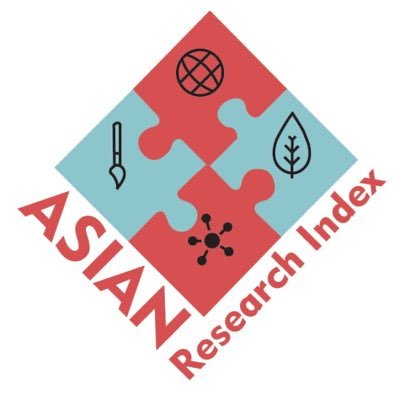Efficacy of Warm Compress Therapy in Enhancing Tear Film Quality and Reducing Postoperative Dry Eye Syndrome after Cataract Surgery: A Randomized Controlled Trial
DOI:
https://doi.org/10.55735/zamj0790Keywords:
Cataract, Dry eye syndrome , Tear film , Warm compress therapyAbstract
Background: Dry eye disease is a multifactorial condition often exacerbated by cataract surgery, leading to discomfort and visual disturbances. Meibomian gland dysfunction, a key cause of dry eye disease, contributes to tear film instability, which can be managed with warm compress therapy. Objective: To evaluate the effectiveness of perioperative warm compress therapy in improving tear film stability and reducing dry eye symptoms following cataract surgery. Methodology: This randomized controlled trial involved 60 participants aged 50 to 70 years with moderate to severe dry eye symptoms and tear film instability, as indicated by high ocular surface disease index scores. Patients were randomly assigned to an intervention group, receiving warm compress therapy after surgery, and a control group receiving standard dry eye treatments for six weeks. Perioperative and postoperative evaluations included the ocular surface disease index and a standardised patient evaluation of eye dryness questionnaire to measure dry eye symptoms and quality of life. The normality of the data was assessed using the Shapiro-Wilk test. Independent and paired sample t-tests were used to analyse the parametric difference between and within each group, respectively, to assess improvement in tear film stability and symptom reduction. Results: Warm compress therapy mean standardised patient evaluation of eye dryness questionnaire at day one was 20.37±3.85 before the treatment and 2.37±1.36 after the treatment, mean score of the control group before treatment was 17.41±2.4, after the treatment was 5.38±1.5. The mean score of ocular surface disease index scores of the warm compress therapy before and after treatment was 75.48±9.09, 18.07±4.45. The mean score of ocular surface disease index of the control group before and after treatment was 54.11±11.3, and 31.41±6.2, respectively. The mean difference in ocular surface disease index was 22.7 (p≤0.05). Conclusion: Significant difference was found between both groups; the warm compress therapy group shows greater improvement in dry eye symptoms and tear film quality, while warm compress therapy offers a significant benefit in managing dry eye after cataract surgery.
Downloads
References
1. Naderi K, Gormley J, O’Brart D. Cataract surgery and dry eye disease: a review. European Journal of Ophthalmology 2020; 30(5): 840–55. DOI: https://doi.org/10.1177/1120672120929958
https://doi.org/10.1177/1120672120929958 DOI: https://doi.org/10.1177/1120672120929958
2. Miura M, Inomata T, Nakamura M, et al. Prevalence and characteristics of dry eye disease after cataract surgery: a systematic review and meta-analysis. Ophthalmology and Therapy 2022; 11(4): 1309–32. DOI: https://doi.org/10.1007/s40123-022-00513-y
https://doi.org/10.1007/s40123-022-00513-y DOI: https://doi.org/10.1007/s40123-022-00513-y
3. Ishrat S, Nema N, Chandravanshi S. Incidence and pattern of dry eye after cataract surgery. Saudi Journal of Ophthalmology 2019; 33(1): 34–40. DOI: https://doi.org/10.1016/j.sjopt.2018.10.009
https://doi.org/10.1016/j.sjopt.2018.10.009 DOI: https://doi.org/10.1016/j.sjopt.2018.10.009
4. Zhou X, Shen Y, Shang J, Zhou X. Effects of warm compress on tear film, blink pattern and Meibomian gland function in dry eyes after corneal refractive surgery. BMC Ophthalmology 2021; 21( 1): 330. DOI: https://doi.org/10.1186/s12886-021-02091-2
https://doi.org/10.1186/s12886-021-02091-2 DOI: https://doi.org/10.1186/s12886-021-02091-2
5. Arita R, Morishige N, Sakamoto I, et al. Effects of a warm compress containing menthol on the tear film in healthy subjects and dry eye patients. Scientific Reports 2017; 7(1): 45848. DOI: https://doi.org/10.1038/srep45848
https://doi.org/10.1038/srep45848 DOI: https://doi.org/10.1038/srep45848
6. Chan E, Mahroo OA, Spalton DJ. Complications of cataract surgery. Clinical and Experimental Optometry 2010; 93(6): 379–89. DOI: https://doi.org/10.1111/j.1444-0938.2010.00516.x
https://doi.org/10.1111/j.1444-0938.2010.00516.x DOI: https://doi.org/10.1111/j.1444-0938.2010.00516.x
7. Navarro-Lopez S, Moya-Ramon M, Gallar J, Carracedo G, Aracil-Marco A. Effects of physical activity/exercise on tear film characteristics and dry eye associated symptoms: A literature review. Contact Lens and Anterior Eye 2023; 46(4): 101854. DOI: https://doi.org/10.1016/j.clae.2023.101854
https://doi.org/10.1016/j.clae.2023.101854 DOI: https://doi.org/10.1016/j.clae.2023.101854
8. Dierker DS, Hauswirth SG. Thermal pulsation with or without dexamethasone intracanalicular insert for meibomian gland dysfunction: a prospective, masked trial. Clinical Ophthalmology 2022; 16: 1477–85. DOI: https://doi.org/10.2147/OPTH.S359719
https://doi.org/10.2147/OPTH.S359719 DOI: https://doi.org/10.2147/OPTH.S359719
9. Barabino S. Is dry eye disease the same in young and old patients? A narrative review of the literature. BMC Ophthalmology 2022; 22(1): 85. DOI: https://doi.org/10.1186/s12886-022-02269-2
https://doi.org/10.1186/s12886-022-02269-2 DOI: https://doi.org/10.1186/s12886-022-02269-2
10. Park J, Yoo Y-S, Shin K, et al. Effects of lipiflow treatment prior to cataract surgery: a prospective, randomized, controlled study. American Journal of Ophthalmology 2021; 230: 264–75. DOI: https://doi.org/10.1016/j.ajo.2021.04.031
https://doi.org/10.1016/j.ajo.2021.04.031 DOI: https://doi.org/10.1016/j.ajo.2021.04.031
11. Wu P-C, Ma S-H, Huang Y-Y, Chang J-Y, Chang Y-T, Dai Y-X. Psoriasis and dry eye disease: a systematic review and meta-analysis. Dermatology 2022; 238(5): 876–85. DOI: https://doi.org/10.1159/000522167
https://doi.org/10.1159/000522167 DOI: https://doi.org/10.1159/000522167
12. Elksnis Ē. Tear Film Osmolarity of the Eye after Cataract Surgery. Summary of the Doctoral Thesis. 2021.
13. Caban M, Omulecki W, Latecka-Krajewska B. Dry eye in Sjögren's syndrome–characteristics and therapy. European Journal of Ophthalmology 2022; 32(6): 3174–84. DOI: https://doi.org/10.1177/11206721221091375
https://doi.org/10.1177/11206721221091375 DOI: https://doi.org/10.1177/11206721221091375
14. Brémond-Gignac D, Navel V, Doan S, Chiambaretta F. Paediatric ocular rosacea: diagnosis and management with an eyelid-warming device and topical azithromycin 1.5%. Journal Français d'Ophtalmologie 2022; 45(10): 1150–9. DOI: https://doi.org/10.1016/j.jfo.2022.01.003
https://doi.org/10.1016/j.jfo.2022.01.003 DOI: https://doi.org/10.1016/j.jfo.2022.01.003
15. Solomon SD, Shoge RY, Ervin AM, et al. Improving access to eye care: a systematic review of the literature. Ophthalmology 2022; 129(10): e114–e126. DOI: https://doi.org/10.1016/j.ophtha.2022.07.012
https://doi.org/10.1016/j.ophtha.2022.07.012 DOI: https://doi.org/10.1016/j.ophtha.2022.07.012
16. Wang D-H, Guo H, Xu W, Liu X-Q. Efficacy and safety of the disposable eyelid warming masks in the treatment of dry eye disease due to Meibomian gland dysfunction. BMC Ophthalmology 2024; 24(1): 376. DOI: https://doi.org/10.1186/s12886-024-03642-z
https://doi.org/10.1186/s12886-024-03642-z DOI: https://doi.org/10.1186/s12886-024-03642-z
17. Yang F, Yang L, Ning X, Liu J, Wang J. Effect of dry eye on the reliability of keratometry for cataract surgery planning. Journal Français d'Ophtalmologie 2024; 47(2): 103999. DOI: https://doi.org/10.1016/j.jfo.2023.04.016
https://doi.org/10.1016/j.jfo.2023.04.016 DOI: https://doi.org/10.1016/j.jfo.2023.04.016
18. Yang Y-J, Lee W-Y, Kim Y-j, Hong Y-p. A meta-analysis of the efficacy of hyaluronic acid eye drops for the treatment of dry eye syndrome. International Journal of Environmental Research and Public Health 2021; 18(5): 2383. DOI: https://doi.org/10.3390/ijerph18052383
https://doi.org/10.3390/ijerph18052383 DOI: https://doi.org/10.3390/ijerph18052383
19. Miao S, Yan R, Jia Y, Pan Z. Effect of intense pulsed light therapy in dry eye disease caused by meibomian gland dysfunction: a systematic review and meta-analysis. Eye & Contact Lens 2022; 48(10): 424–429. DOI: https://doi.org/10.1097/ICL.0000000000000934
https://doi.org/10.1097/ICL.0000000000000934 DOI: https://doi.org/10.1097/ICL.0000000000000934

Downloads
Published
License
Copyright (c) 2025 The Healer Journal of Physiotherapy and Rehabilitation Sciences

This work is licensed under a Creative Commons Attribution 4.0 International License.














